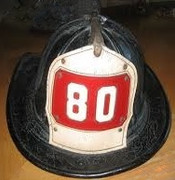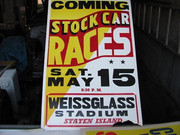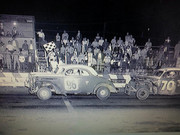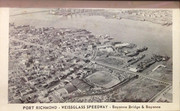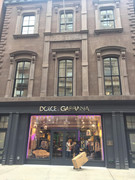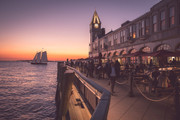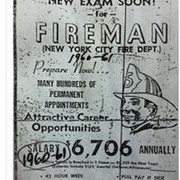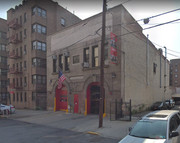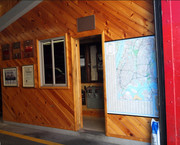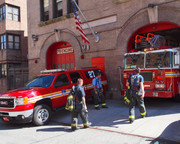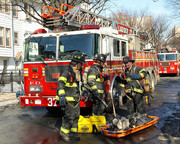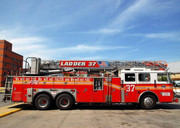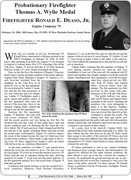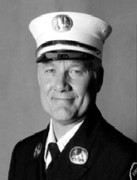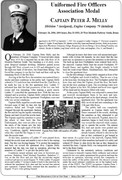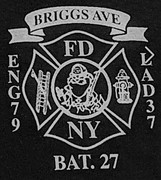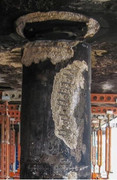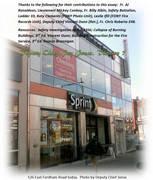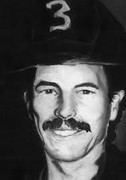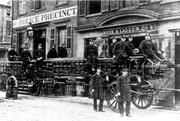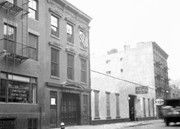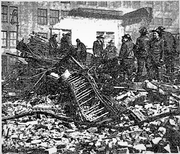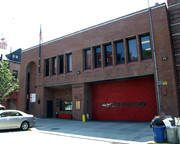Engine 157/Ladder 80 (continued)
Engine 157/Ladder 80 medals:
ALBERT H. DELMAR LT. ENG. 157 DEC. 10, 1948 1949 COMMERCE
OLOF W. MATSON FF. LAD. 80 OFF DUTY JUN. 10, 1939 1940 PRENTICE

JAMES T. LYNCH CAPT. LAD. 80 1939 1940 STEPHENSON
Captain James T. Lynch, Ladder 80, received the 1940 Stephenson Medal for best disciplined company in 1939.
ALEXANDER A. ZGARDOWSKI FF. LAD. 80 DEC. 31, 1945 1946 JOHNSTON
HENRY V. JAKUBOWSKI FF. LAD. 80 MAR. 25, 1960 1961 KANE
THOMAS R. WYATT FF. LAD. 80 NOV. 22, 1969 1970 SCOTT

DENNIS M. PETERSON FF. LAD. 80 DEC. 19, 1981 1982 CRIMMINS
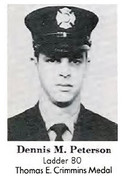
LODD - December 19, 1981
ANTHONY PICOZZI FF. LAD. 80 MAY 3, 1983 1984 GOLDMAN
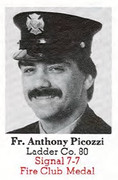
ALL MEMBERS LAD. 80 DEC. 31, 1991 1992 BURN CENTER
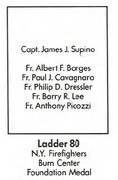
ANTHONY PICOZZI FF. LAD. 80 DEC. 31, 1991 1992 LANE
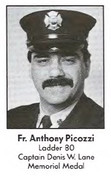
BARRY R. LEE FF. LAD. 80 DEC. 31, 1991 1992 PRENTICE

Ladder 80 LODD:
FIREFIGHTER DENNIS M. PETERSON LADDER 80 December 19, 1981

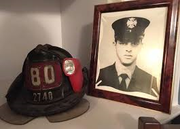
Remembering FF Dennis M Peterson, Ladder 80, who died in the line of duty on December 19, 1981, while operating at Staten Island Box 962. FF Dennis Peterson responded to a fire in an occupied apartment at 176 Van Pelt Avenue. During operations, FF Peterson made entry into the burning apartment, searched, and rescued a 22 year old man. FF Peterson went back in and rescued a 9 year old child from the attic. Moments after exiting the structure, FF Peterson suddenly collapsed outside the fire building. The 1st firefighter to rush to his aid was his father, FF Daniel Peterson of Ladder 83, but the younger Peterson died in his father's arms. He was 36 years old, married and the father of 2 daughters. Please keep the memory alive of his sacrifice. (from NYC FireWire)
The New York Times Archives | 1981
FIREFIGHTER SAVES A MAN, THEN COLLAPSES AND DIES
By SHAWN G. KENNEDY DEC. 20, 1981
A 36-year-old Staten Island fireman who had received three commendations for valor suffered a fatal heart attack yesterday shortly after rescuing a young man from an early morning blaze. The fireman, Dennis Michael Peterson of Ladder Company 80, was stricken while fighting the blaze alongside his father, Daniel Peterson, a fireman with Ladder Company 83.
Fireman Peterson was the first New York City firefighter this year to lose his life in the line of duty. The last city fireman to die while fighting a fire was Battalion Chief Frank Tutlemondo, who pushed a fellow fireman, Lieut. Michael Ramos, away from a collapsing wall during a Brooklyn fire in August 1980.
Witness Describes Blaze
The fire yesterday - in a two-story building at 176 Van Pelt Avenue in Mariner's Harbor, S.I. - broke out about 1:30 A.M. Members of Ladder Company 80 arrived to find the first and second floors in the small, two-family house ablaze.
''The first time I looked out my window I saw that the front door was in flames,'' said Irene Rudolph, who lives across the street from the frame house. ''The next time I looked, a few minutes later, the entire building was on fire. I don't know how the firemen got in there.''
Firefighters could not enter the building through the front door but Fahmy Saad, a resident of the building who was able to escape with his wife and the couple who lived on the first floor, told the firemen that his two sons were still trapped in the second-floor apartment. The firefighters went to the back of the building and Fireman Peterson, who was the first man up the ladder, was able to bring one son, 22-year-old Mountier Saad, out. Meanwhile, members of Ladder Company 86, which also responded to the alarm, rescued Mr. Saad's other son, 9-year-old Maher. The fire was brought under control just after 2 A.M.
Fireman Peterson had returned to the building to assist in the cleanup operation when he began gasping for air. He struggled to a window and the company's chief, Lieut. George Harrison, grabbed him to keep him from falling. Lieutenant Harrison gave him mouth-to-mouth resuscitation and heart massage, but the fireman lost consciousness. He was taken to St. Vincent's Hospital on Staten Island, where he died at about 3:30 A.M.
Victim Flown to Manhattan
'We knew that someone else had been hurt or died when none of the firemen left even though the fire had been put out,'' Mrs. Rudolph said. ''It was cold but they just stayed. Finally we saw them back one of the engines up to the house and they brought the hurt fireman down.''
Maher Saad was taken first to St. Vincent's Hospital and then transported to New York Hospital-Cornell Medical Center by a Coast Guard helicopter that landed in Central Park early this morning. Mountier Saad was taken to Staten Island Hospital and later transferred to the same Manhattan hospital. Both victims are listed in critical condition with severe burns.
The most recent of the three decorations received by Fireman Peterson, a 13-year member of the force, came last July for his assistance in foiling a robbery at a Staten Island bank. While stopped at a traffic light he noticed a man leaving a Chase Manhattan Bank branch on Forrest Avenue carrying what turned out to be a decoy money satchel trailing red smoke. Mr. Peterson left his automobile and chased the suspect, who was able to jump into a waiting car. The police were able to find the suspects after the fireman gave them the license number of the vehicle.
In July 1979, Mr. Peterson rescued two children caught between two high-tension wires. In June 1971 he used mouth-to-mouth resuscitation in a futile effort to save a 73-year-old woman who had suffered a heart attack.
Mr. Peterson began his career with the department with Engine Company 279 in Brooklyn. In March 1980 he joined Ladder Company 80. Mr. Peterson's brother, John, is a firefighter with Ladder Company 105 in Brooklyn. The fireman, who lived at 3 Stebbins Avenue in New West Brighton, S.I., is survived by his wife, Gail, and two daughters, Laura, 11, and Denise, 9.
A funeral mass will be offered at 11 A.M. Tuesday at Sacred Heart Roman Catholic Church, at 981 Castleton Avenue in New West Brighton. Burial will follow at St. Peter's Cemetery.
Engine 157/Ladder 80 WTC-Related Illness Deaths:
FIREFIGHTER BRIAN C. MALLOY LADDER 80 March 28, 2011

https://www.firehero.org/fallen-firefighter/brian-c-malloy/
FIREFIGHTER JIMMY MARTINEZ ENGINE 157 August 23, 2018
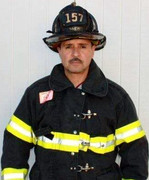
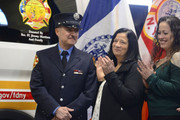
https://www.nydailynews.com/new-york/fdny-retiree-donates-van-transport-sick-firefighters-article-1.2987113
RIP. Never forget.
Engine 157/Ladder 80 medals:
ALBERT H. DELMAR LT. ENG. 157 DEC. 10, 1948 1949 COMMERCE
OLOF W. MATSON FF. LAD. 80 OFF DUTY JUN. 10, 1939 1940 PRENTICE

JAMES T. LYNCH CAPT. LAD. 80 1939 1940 STEPHENSON
Captain James T. Lynch, Ladder 80, received the 1940 Stephenson Medal for best disciplined company in 1939.
ALEXANDER A. ZGARDOWSKI FF. LAD. 80 DEC. 31, 1945 1946 JOHNSTON
HENRY V. JAKUBOWSKI FF. LAD. 80 MAR. 25, 1960 1961 KANE
THOMAS R. WYATT FF. LAD. 80 NOV. 22, 1969 1970 SCOTT

DENNIS M. PETERSON FF. LAD. 80 DEC. 19, 1981 1982 CRIMMINS

LODD - December 19, 1981
ANTHONY PICOZZI FF. LAD. 80 MAY 3, 1983 1984 GOLDMAN

ALL MEMBERS LAD. 80 DEC. 31, 1991 1992 BURN CENTER

ANTHONY PICOZZI FF. LAD. 80 DEC. 31, 1991 1992 LANE

BARRY R. LEE FF. LAD. 80 DEC. 31, 1991 1992 PRENTICE

Ladder 80 LODD:
FIREFIGHTER DENNIS M. PETERSON LADDER 80 December 19, 1981


Remembering FF Dennis M Peterson, Ladder 80, who died in the line of duty on December 19, 1981, while operating at Staten Island Box 962. FF Dennis Peterson responded to a fire in an occupied apartment at 176 Van Pelt Avenue. During operations, FF Peterson made entry into the burning apartment, searched, and rescued a 22 year old man. FF Peterson went back in and rescued a 9 year old child from the attic. Moments after exiting the structure, FF Peterson suddenly collapsed outside the fire building. The 1st firefighter to rush to his aid was his father, FF Daniel Peterson of Ladder 83, but the younger Peterson died in his father's arms. He was 36 years old, married and the father of 2 daughters. Please keep the memory alive of his sacrifice. (from NYC FireWire)
The New York Times Archives | 1981
FIREFIGHTER SAVES A MAN, THEN COLLAPSES AND DIES
By SHAWN G. KENNEDY DEC. 20, 1981
A 36-year-old Staten Island fireman who had received three commendations for valor suffered a fatal heart attack yesterday shortly after rescuing a young man from an early morning blaze. The fireman, Dennis Michael Peterson of Ladder Company 80, was stricken while fighting the blaze alongside his father, Daniel Peterson, a fireman with Ladder Company 83.
Fireman Peterson was the first New York City firefighter this year to lose his life in the line of duty. The last city fireman to die while fighting a fire was Battalion Chief Frank Tutlemondo, who pushed a fellow fireman, Lieut. Michael Ramos, away from a collapsing wall during a Brooklyn fire in August 1980.
Witness Describes Blaze
The fire yesterday - in a two-story building at 176 Van Pelt Avenue in Mariner's Harbor, S.I. - broke out about 1:30 A.M. Members of Ladder Company 80 arrived to find the first and second floors in the small, two-family house ablaze.
''The first time I looked out my window I saw that the front door was in flames,'' said Irene Rudolph, who lives across the street from the frame house. ''The next time I looked, a few minutes later, the entire building was on fire. I don't know how the firemen got in there.''
Firefighters could not enter the building through the front door but Fahmy Saad, a resident of the building who was able to escape with his wife and the couple who lived on the first floor, told the firemen that his two sons were still trapped in the second-floor apartment. The firefighters went to the back of the building and Fireman Peterson, who was the first man up the ladder, was able to bring one son, 22-year-old Mountier Saad, out. Meanwhile, members of Ladder Company 86, which also responded to the alarm, rescued Mr. Saad's other son, 9-year-old Maher. The fire was brought under control just after 2 A.M.
Fireman Peterson had returned to the building to assist in the cleanup operation when he began gasping for air. He struggled to a window and the company's chief, Lieut. George Harrison, grabbed him to keep him from falling. Lieutenant Harrison gave him mouth-to-mouth resuscitation and heart massage, but the fireman lost consciousness. He was taken to St. Vincent's Hospital on Staten Island, where he died at about 3:30 A.M.
Victim Flown to Manhattan
'We knew that someone else had been hurt or died when none of the firemen left even though the fire had been put out,'' Mrs. Rudolph said. ''It was cold but they just stayed. Finally we saw them back one of the engines up to the house and they brought the hurt fireman down.''
Maher Saad was taken first to St. Vincent's Hospital and then transported to New York Hospital-Cornell Medical Center by a Coast Guard helicopter that landed in Central Park early this morning. Mountier Saad was taken to Staten Island Hospital and later transferred to the same Manhattan hospital. Both victims are listed in critical condition with severe burns.
The most recent of the three decorations received by Fireman Peterson, a 13-year member of the force, came last July for his assistance in foiling a robbery at a Staten Island bank. While stopped at a traffic light he noticed a man leaving a Chase Manhattan Bank branch on Forrest Avenue carrying what turned out to be a decoy money satchel trailing red smoke. Mr. Peterson left his automobile and chased the suspect, who was able to jump into a waiting car. The police were able to find the suspects after the fireman gave them the license number of the vehicle.
In July 1979, Mr. Peterson rescued two children caught between two high-tension wires. In June 1971 he used mouth-to-mouth resuscitation in a futile effort to save a 73-year-old woman who had suffered a heart attack.
Mr. Peterson began his career with the department with Engine Company 279 in Brooklyn. In March 1980 he joined Ladder Company 80. Mr. Peterson's brother, John, is a firefighter with Ladder Company 105 in Brooklyn. The fireman, who lived at 3 Stebbins Avenue in New West Brighton, S.I., is survived by his wife, Gail, and two daughters, Laura, 11, and Denise, 9.
A funeral mass will be offered at 11 A.M. Tuesday at Sacred Heart Roman Catholic Church, at 981 Castleton Avenue in New West Brighton. Burial will follow at St. Peter's Cemetery.
Engine 157/Ladder 80 WTC-Related Illness Deaths:
FIREFIGHTER BRIAN C. MALLOY LADDER 80 March 28, 2011

https://www.firehero.org/fallen-firefighter/brian-c-malloy/
FIREFIGHTER JIMMY MARTINEZ ENGINE 157 August 23, 2018


https://www.nydailynews.com/new-york/fdny-retiree-donates-van-transport-sick-firefighters-article-1.2987113
RIP. Never forget.











